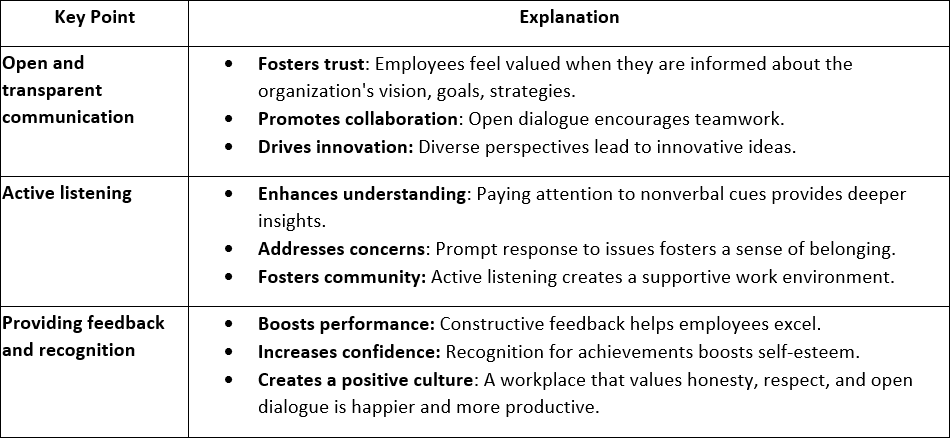In the modern business world, the concept of a happy and productive workplace is not just a luxury, but a necessity. A positive work environment fosters creativity, innovation, and productivity. It’s a place where employees feel valued, engaged, and motivated to contribute their best work. It is an environment that promotes employee engagement, boosts morale, and enhances productivity.
Research indicates that employees who are satisfied with their work environment are more likely to be productive, committed to their work, and less likely to leave the company.
Creating a positive work environment has numerous benefits:
Employee happiness is a crucial element in any organization. It is not just about creating a pleasant work environment, but also about fostering a sense of belonging and satisfaction among employees. Several factors contribute to employee happiness. These include fair compensation, job security, career growth opportunities, work-life balance, and a positive work environment. Employees also value recognition for their efforts and achievements. A positive workplace culture that encourages collaboration and innovation can significantly boost employee morale and satisfaction.
Workplace happiness directly impacts productivity. Happy employees are more likely to be engaged and committed to their work, leading to higher levels of productivity. They are also more likely to stay with the company longer, reducing turnover rates and recruitment costs. Furthermore, happy employees tend to be more creative and innovative, contributing to the overall growth of the organization. Investing in employee happiness is not just beneficial for the employees but also for the organization as a whole. It leads to a more productive, loyal, and innovative workforce that can drive the company’s success in the long run.
Effective communication is the cornerstone of a happy and productive workplace. It’s the secret sauce that fosters a sense of connection, motivation, and commitment among employees.
Here’s a table summarizing the key points:

Creating a happy and productive workplace is not an overnight task. It requires strategic planning and implementation. One of the key strategies is setting clear expectations.
When employees are unclear about what’s expected of them, it can lead to confusion, frustration, and decreased productivity. Clear expectations provide a roadmap for employees to follow, reducing the likelihood of misunderstandings or misinterpretations. They also establish a baseline for performance evaluation, making it easier for both the employee and the manager to assess progress and identify areas for improvement.
To ensure all employees understand their responsibilities, managers should communicate expectations clearly and consistently. This could involve providing detailed job descriptions, setting specific performance goals, or offering regular feedback on performance. In addition, managers should also encourage open communication and be willing to clarify any uncertainties.
When employees know exactly what’s expected of them, they’re more likely to feel confident in their roles and motivated to perform at their best.
Professional development and training programs play a crucial role in fostering a positive work environment. They not only equip employees with the necessary skills but also boost their confidence, leading to higher job satisfaction and productivity.
Professional development and training programs play a crucial role in fostering a positive work environment. They not only equip employees with the necessary skills but also boost their confidence, leading to higher job satisfaction and productivity.
Lastly, offering career planning and advancement opportunities can significantly improve workplace happiness and productivity. When employees see a clear path for growth within the organization, it fosters a sense of purpose and motivation.
In the realm of business, there’s an undeniable connection between employee happiness and productivity. The happier the employees, the more productive they are, and the more successful the business becomes. This is not a mere assumption but a fact backed by numerous studies and research.
The long-term benefits of investing in employee happiness and productivity:
